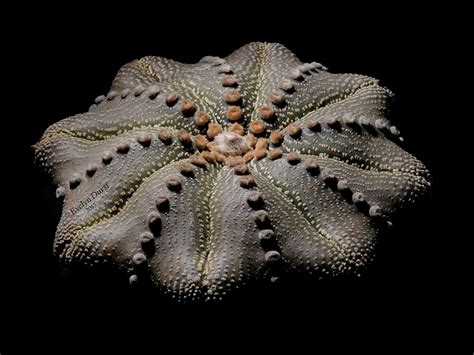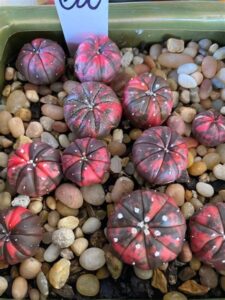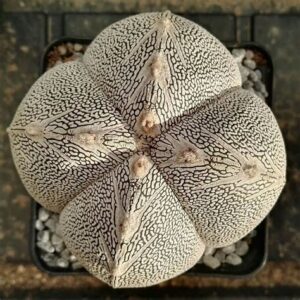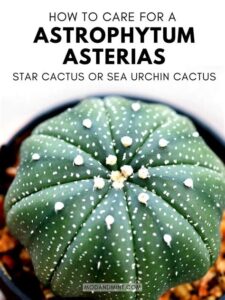In the vast and diverse world of succulents, Ariocarpus and Astrophytum stand out as two of the most intriguing genera. Each boasts its own unique characteristics and aesthetic appeal, inviting the fascination of enthusiasts and collectors alike. These succulent marvels embody the essence of adaptation, thriving in rugged environments while showcasing an array of captivating forms and textures. However, for those new to the world of cacti and succulents, distinguishing between these two can be somewhat daunting. This article aims to unravel the intricacies of Ariocarpus and Astrophytum, highlighting distinctive characteristics that set them apart, while also delving into their ecological significance and appeal to collectors.
Understanding the Structural Nuances
Ariocarpus and Astrophytum exhibit unique structural traits that reflect their evolutionary adaptations to arid environments. These differences play a crucial role in their identification and classification within the succulent kingdom.
Ariocarpus, often referred to as “living stones,” showcases a strikingly unusual appearance. They have a robust, flattened profile, resembling boulders or stones nestled within their native habitat. These plants typically feature tubercles—short, conical protrusions—arranged in a spiral pattern, providing a camouflage against predators. Their skin can range from green to grayish, often adorned with a waxy coating that minimizes moisture loss. Additionally, Ariocarpus may produce beautiful, large blossoms in shades of white or pink, presenting a dramatic contrast to their earthy tones.
In contrast, Astrophytum presents an entirely different aesthetic. Commonly known as star cacti, their shape tends to be more cylindrical or globular. Astrophytum specimens are characterized by their ribbed, star-like structure, giving them a distinctive profile. The skin of Astrophytum can vary significantly; some species exhibit unique patterns, including spots or stripes, reminiscent of a celestial body. Their flowers, typically large, funnel-shaped, and brightly colored, occur at the apex, further enhancing their visual appeal. The combination of their form, patterns, and floral displays makes Astrophytum exceedingly alluring to collectors and enthusiasts.
Differential Adaptations in Habitats
Examining the habitats and ecological adaptations of Ariocarpus and Astrophytum reveals deeper insights into their existence and survival strategies. Both genera flourish in harsh environments, yet their adaptations are tailored to their specific ecological niches.
Ariocarpus species often inhabit rocky terrains, thriving in well-drained soils with reduced competition from other vegetation. This adaptation not only aids in moisture retention but also minimizes the risk of rotting—common in succulents exposed to overly saturated soils. Seeds of Ariocarpus require sustained periods of drought before germination, highlighting the plant’s resilience and remarkable ability to endure adverse conditions. As a result, Ariocarpus tends to grow slowly, developing over decades into mature plants.
Astrophytum, on the other hand, often thrives in sandy or gravelly soils and is more adaptable to a broader range of environmental conditions. Species like Astrophytum asterias, commonly known as the star cactus, are found in regions with a mix of sun and shade, showcasing their ability to withstand varying light conditions. These plants exhibit quick growth rates compared to Ariocarpus, with the potential to reach maturity within several years, making them relatively accessible to growers.
Identification and Classification: A Detailed Examination
One of the most significant elements in distinguishing Ariocarpus from Astrophytum lies in their classification within the broader cactus family. Understanding the taxonomic hierarchy is essential for enthusiasts aiming to deepen their knowledge of these distinct genera.
Ariocarpus falls under the family Cactaceae and is primarily found in Mexico and the southern United States. With numerous species—such as Ariocarpus fissuratus and Ariocarpus retusus—each displaying its unique morphological traits, they are a delight to study. Taxonomically, Ariocarpus is classified into its own subfamily due to unique features, including its mode of flowering and growth habits. This classification underscores the significance of morphological traits in understanding plant relationships.
Conversely, Astrophytum is also classified within the family Cactaceae but is distinct in its subfamily structure. Astrophytum species, such as Astrophytum myriostigma and Astrophytum capricorne, are characterized by their spotty or striped appearances, further adding to their allure. Notably, some species within this genus are rare and sought after by collectors, achieving high market values due to their unique appearance and limited distribution.
Cultural Significance and Collectibility
Beyond their biological and ecological aspects, both Ariocarpus and Astrophytum carry cultural significance and have become highly prized among collectors around the globe. Their uniqueness and rarity directly contribute to their desirability, evoking a sense of fascination among enthusiasts.
Ariocarpus has often been described as an ‘obsession’ for many collectors, owing to its slow growth, distinctive appearance, and particular care requirements. Cultivators often find themselves deeply connected to their Ariocarpus specimens, as nurturing these plants cultivates a sense of patience and commitment. Additionally, the rarity of some Ariocarpus species further fuels the passion of collectors, giving them a sense of purpose in seeking out these elusive gems.
Astrophytum, with its more varied and visually striking patterns, attracts attention not only for its aesthetic qualities but also for its adaptability in cultivation. Many commercial growers propagate Astrophytum species, making them more accessible to novice collectors. However, certain rare varieties, such as Astrophytum asterias var. nudum, retain the allure of exclusivity and demand among serious collectors. The interaction with Astrophytum cultivates a different sense of wonder; enthusiasts are often captivated by the numerous cultivars and hybrids available, each offering a novel take on familiar characteristics.
Appreciating the Unique Aesthetics
The visual appeal of Ariocarpus and Astrophytum cannot be overstated. The aesthetics of each genus invite contemplation and admiration, encouraging deeper engagement with the wonders of the natural world.
The rugged, earthy tones of Ariocarpus resemble ancient sculptures crafted by nature itself, embodying an almost primordial beauty. Whether viewed in the sun-drenched desert or in an indoor collection, these plants serve as a constant reminder of resilience and survival against all odds.
In stark contrast, Astrophytum dazzles with its vibrant colors and intricate patterns, reminiscent of a starry night sky. The broad range of appearances—from the subtle, mottled hues of Astrophytum myriostigma to the boldly striped patterns of Astrophytum capricorne—creates a visual symphony that entices even the most casual observer.
Conclusion: A World of Fascination and Discovery
In summation, Ariocarpus and Astrophytum are much more than mere succulents; they are living testaments to the marvels of adaptation and evolution. Understanding their distinct characteristics, habitats, and cultural significance enhances appreciation for these unique plant forms. Whether you find yourself captivated by the slow and steady beauty of Ariocarpus or drawn to the dazzling diversity of Astrophytum, these genera represent a world of fascination waiting to be explored. The deeper you delve into their intriguing lives, the more you uncover layers of complexity and beauty, fostering a connection to the natural world that transcends the limitations of everyday life.





Leave a Comment